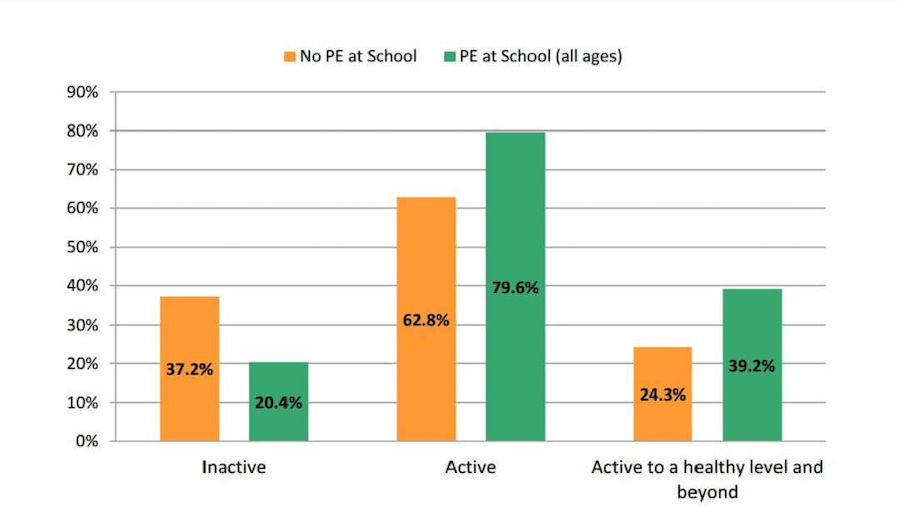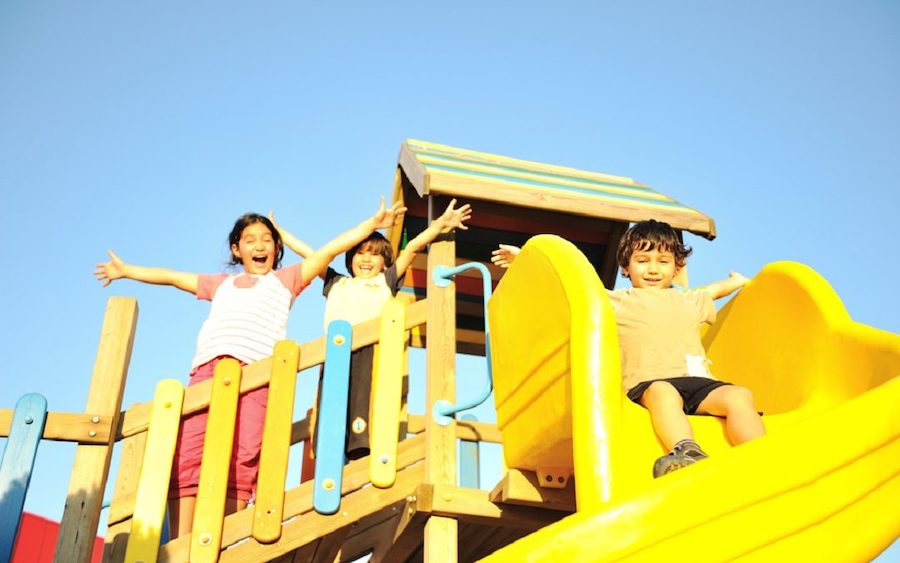
How to Incorporate Movement During Hybrid Learning
PRACTICAL TIPS FOR CLASSROOM AND HOME EDUCATORS
Mike Kuczala, Director of Instruction for the Regional Training Center, and Dr. Julian Reed, Founder and CEO of ActivEd, Inc., share their insights on the science behind movement in school settings, how it improves learning outcomes for students, and the ways educators can implement movement in any learning setting.
Memory Systems and the Brain-Friendly Classroom
Physical activity offers a wide range of benefits for students including increasing motivation, improving energy levels, and boosting brain function. One critical component of brain functioning that is impacted by physical activity is memory. A teacher's goal is to help develop students’ long-term memory to successfully master content, social-emotional abilities, and physical skills. Long-term memory enables students to remember information and repeat tasks to improve their overall performance.
Previously, within the information-processing model, memory was divided into long- and short-term memory. However, more recent models split short-term memory into immediate and working memory. Immediate memory lasts between 45-60 seconds and working memory is only 10-15 seconds. Most learning passes through these two types of memory but there are limitations to working memory that must be addressed.
Fast Facts Related to Memory
- Children who are 5 and younger can hold onto 1-3 pieces of unrelated pieces of information.
- Children who are 5-14 can hold onto 3-7 pieces of unrelated pieces of information.
- Children who are 14 and older can hold onto 5-9 pieces of unrelated pieces of information.
From Working Memory to Long-Term Storage
To successfully move information into long-term storage, children can practice repetition or complete assignments or reports related to that information. Keep in mind that the brain prefers to learn information using kinesthetic activity through implicit channels such as movement and emotion.
Have you seen students who appear to be unengaged in the content, staring out the window, or yawning? This is a sign that children require an external stimulus. That can be achieved with movement or laughter to increase blood flow to the brain and improve the students’ emotional states.
Consider the following questions. Does the content make sense to children, and can students find meaning? These two criteria are needed in order for children to efficiently store information in their long-term memories. But more importantly, meaning is directly and positively impacted when a child is in a better state of mind. That’s why just a small movement break can make a big difference in learning outcomes.
Learning Is Emotional
When children come to school to learn, their brains prioritize information on three levels:
- Survival
- Emotional
- Cognitive
Students need to cross the first two levels to achieve an optimal state of learning. That is why emotional state management is so critical to implement because many students fall within this emotional level.
Using movement to stimulate students’ kinesthetic senses not only improves their emotional state but also helps solidify what they are learning and keeps them on task. Movement stimulates blood flow to the brain leading to beneficial structural changes that improve skills including organization, planning, monitoring, and problem-solving.
Try movement activities, such as tapping feet or clapping hands, during which students must stand up and move their bodies. The more complex the movement, the more it prepares the brain for learning.
Beyond Brain Breaks
Physical activity improves cognition, academic achievement, on-task behavior, focus, social-emotional growth, and mental health. Active learning gets children moving without losing instruction time and still reinforces learning. There doesn’t always have to be an activity attached to an active classroom. Cooperative groups or partner “walk and talk” activities can also facilitate active learning.
Impacts of Daily Activity Breaks
A study conducted in 2006 looking at the effects of daily activity breaks found that children who struggled the most with on-task behavior saw a 20% increase in this behavior when activity breaks were implemented. Children who struggled moderately with on-task behavior saw an 8% increase.
Framework for Using Movement
Mike Kuczala’s framework allows teachers to approach physical activity thoughtfully and purposefully in the classroom or virtually and includes the following steps:
- Part 1: Prepare the Brain to learn by providing physical activities. Today, many children are spending more time on screens. As a result, they are not moving enough. This inhibits the growth of the vestibular system, the body’s sensory system that is critical for navigating through space. Recent research points to coordinative, rhythmic, and beat-based activities to support executive functioning of the brain which improves academic achievement. The activities provided should be evidence-based and directly support the vestibular system and executive function of the brain.
- Part 2: Provide Brain Breaks to help engage children’s brains and improve attention, memory, and cognitive abilities. Check out these brain primers created by Dr. Lynne Kenney and Mike Kuczala to liven up your classroom environment and get kids up and moving.
- Part 3: Support Exercise and Fitness. Research shows that physically fit students do better academically. A recent study points to evidence that children who are physically fit perform better on state achievement tests. Upper body strength among children is also linked to higher achievement. Even if a child is not physically fit, just a short burst of exercise still helps improve brain functioning.
- Part 4: Develop Class Cohesion to provide a better emotional environment within the classroom and encourage collaboration, communication, cooperation, and teamwork.
- Part 5: Review Content using fun movement activities can be an effective way to keep students engaged. For example, children can answer multiple-choice questions where each letter represents a movement such as jumping jacks or mountain climbers.
- Part 6: Teach Content using activities that take advantage of the brain’s natural abilities to learn through movement. A great way to implement this is for students to use movements to edit papers. Assign bodily movements to illustrate placement of punctuation and capitalization. For example, have students raise their hands for a capital letter and jump up then down for an exclamation point.
Resources
To learn more about Mike Kuczala’s framework or explore resources related to active learning, visit his website or review this list of books that support a kinesthetic classroom.
Movement impacts the executive functioning of the brain and can be integrated with content you are already teaching by using Walkabouts. Walkabouts correlate to state and national standards, provide dynamic lesson content, and are accessible on all devices.
Try Walkabouts FREE for 60 days and start integrating movement into your lessons.





